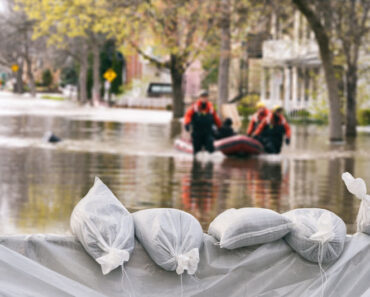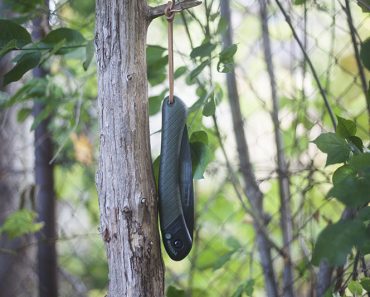As natural disasters, civil unrest, and other emergencies become more common, it’s important to be prepared for the worst. One of the best ways to ensure your safety and survival is to have a well-stocked bug out kit. A bug out kit, also known as a go bag or a survival kit, is a collection of essential items that you can grab quickly in case you need to evacuate your home in a hurry.
In this article, we’ll cover everything you need to know about building a bug out kit. We’ll go over the essentials, such as food, water, shelter, and first aid, as well as some useful items you may not have thought of. We’ll also review some of the best bug out backpacks, cooking kits, and other gear to help you assemble the perfect kit for your needs.
Understanding Bug Out Kits
Before assembling your Bug Out Kit, it’s crucial to understand its purpose fully. A Bug Out Kit is not just a bag filled with random items; it is a strategic and well-thought-out survival resource. It’s designed to provide everything you need for at least 72 hours, giving you enough time to evacuate to a safer location or wait for help to arrive.
Crafting Your Bug Out Kit
Choosing the Right Bag
The foundation of your bug-out kit is the bag itself. Opt for a high-quality, durable backpack that fits comfortably and can withstand harsh conditions. Look for one with multiple compartments to keep your gear organized and easily accessible.
Water and Hydration
Water is a top priority for survival. Include a portable water filter, water purification tablets, and a sturdy water bottle in your bug-out kit. Aim for at least one gallon of water per person per day for a minimum of three days.
Nutritious Food Supplies
Pack non-perishable, high-energy food items such as freeze-dried meals, energy bars, nuts, and canned goods. Ensure you have enough food to last for at least three days for each person in your party.
First Aid Kit
Injuries are common during emergencies, so a well-stocked first aid kit is crucial. Include adhesive bandages, antiseptic wipes, pain relievers, medical tape, gauze, and essential medications.
Shelter and Warmth
Prepare for varying weather conditions by including a lightweight tent, emergency blankets, and extra clothing in your bug-out kit. Staying dry and warm is vital for your well-being.
Communication Tools
Stay connected with the outside world by packing a battery-powered radio, a whistle, and a solar-powered charger for your mobile devices. Also, don’t forget to include a list of important phone numbers.
Multi-Tool and Survival Gear
A versatile multi-tool can be a lifesaver in various situations. Include a high-quality knife, a multi-purpose tool, a flashlight with spare batteries, and fire-starting equipment like waterproof matches or a lighter.
Popular Bug Out Kit Options
Bug Out Bag Essentials
The first step in building a bug out kit is to gather the essentials. These are the items that you absolutely must have in order to survive. They include:
- Water: You should have at least one gallon of water per person per day. This can be stored in bottles or in a hydration bladder.
- Food: You’ll need enough non-perishable food to last at least three days. This can include canned goods, energy bars, and other high-calorie snacks.
- Clothing: You should have at least one change of clothes for each person in your group. Make sure to include warm, waterproof clothing if you live in a cold climate.
- Shelter: A tent or tarp can provide protection from the elements. Make sure to include stakes and guy lines.
- First aid kit: Your kit should include basic first aid supplies such as bandages, antiseptic wipes, and pain relievers.
- Firestarter: A lighter, matches or a magnesium fire starter can help you start a fire for warmth and cooking.
- Navigation: A map and compass can help you find your way if you get lost.
- Multi-tool: A multi-tool can be used for a variety of tasks, from cutting rope to opening cans.
Bug Out Cooking Kit
In addition to the essentials, you’ll also want to include a cooking kit in your bug out bag. This will allow you to prepare hot meals and beverages, which can provide comfort and boost morale. Some items to consider including in your cooking kit are:
- Stove: A compact backpacking stove can be used to boil water or cook food.
- Fuel: Make sure to include enough fuel for your stove.
- Cookware: A lightweight pot and pan can be used to cook meals and boil water.
- Utensils: You’ll need utensils such as a spoon, fork, and knife for eating.
- Plates and bowls: Lightweight, durable plates and bowls can be used for serving food.
Bug Out Bag Kit
Now that you have your essentials and cooking kit, it’s time to assemble your bug out bag. Your bag should be sturdy and comfortable to carry, with plenty of room for all of your gear. Some features to look for in a bug out bag include:
- Capacity: Your bag should be large enough to hold all of your gear, but not so large that it’s cumbersome to carry.
- Comfort: Look for a bag with padded shoulder straps and a waist belt for added comfort.
- Durability: A bag made from high-quality materials will last longer and better protect your gear.
- Organization: Look for a bag with multiple compartments and pockets to help you stay organized.
Bug Out Backpacks
There are many different types of backpacks available for bug out situations. Some popular options include:
- Military-style backpacks: These backpacks are designed to be rugged and durable, with lots of pockets and compartments for organization.
- Hiking backpacks: Hiking backpacks are designed to be comfortable for long periods of wear, with features such as padded shoulder straps and a waist belt.
- Tactical backpacks: Tactical backpacks are designed for military and law enforcement use, with features such as MOLLE webbing and a hydration bladder.
Bug Out Warmth and Shelter Items
In addition to your tent or tarp, you’ll also want to include some items to help you stay warm and dry. Some items to consider include:
- Sleeping bag: A high-quality sleeping bag can keep you warm in even the coldest temperatures.
- Blanket: A lightweight, compact blanket can be used for extra warmth or as a ground cover.
- Emergency bivvy: An emergency bivvy is a lightweight, waterproof shelter that can be used in case of an emergency.
- Hand warmers: Hand warmers can provide extra warmth in cold weather.
Bug Out First Aid and Sanitation Needs
Your bug out kit should also include a first aid kit and items for sanitation and hygiene. Some items to consider include:
First aid kit: Your first aid kit should include basic supplies such as bandages, gauze, and antiseptic wipes. You may also want to include items such as a CPR mask and a tourniquet.
- Prescription medications: If you or anyone in your group takes prescription medications, make sure to include a sufficient supply in your kit.
- Personal hygiene items: Include items such as toilet paper, hand sanitizer, and wet wipes to help you stay clean and healthy.
- Trash bags: Trash bags can be used to collect and dispose of waste.
Bug Out Lights and Solar Power
Lighting is an important consideration in a bug out situation, especially if you need to move at night. Some items to consider include:
- Flashlight: A high-quality flashlight can help you see in the dark.
- Headlamp: A headlamp is a hands-free lighting option that can be especially useful when you need to use both hands.
- Lantern: A lantern can provide ambient light for a larger area.
- Solar charger: A solar charger can be used to charge electronic devices such as a phone or GPS.
Bug Out Communication
Communication is key in any emergency situation. Some items to consider including in your bug out kit include:
- Handheld radio: A handheld radio can be used to communicate with others in your group or to listen for emergency broadcasts.
- Whistle: A whistle can be used to signal for help if you become lost or injured.
- Signaling mirror: A signaling mirror can be used to reflect sunlight and attract attention.
Bug Out Useful Items
In addition to the essentials, cooking kit, and other gear we’ve already discussed, there are a few other items that can be useful to have in a bug out kit. Some options include:
- Duct tape: Duct tape can be used for a variety of tasks, from repairing gear to making a splint.
- Paracord: Paracord can be used for a variety of tasks, from building shelter to securing gear.
- Cash: In case of a power outage or other emergency, it’s always a good idea to have some cash on hand.
Bug Out Water Filtration
In a bug out situation, clean drinking water may be hard to come by. A water filtration system can help you purify water from natural sources such as streams and rivers. Some options to consider include:
- Water filter straw: A water filter straw is a compact, lightweight option that can be used to filter water on the go.
- Water filter bottle: A water filter bottle can be used to purify water and store it for later use.
- Water filter pump: A water filter pump can be used to purify larger quantities of water.
Bug Out Top Handheld Radios
When it comes to communication in a bug out situation, handheld radios are a great option. Some of the top handheld radios for bug out situations include:
- Baofeng UV-5R: The Baofeng UV-5R is a compact, affordable radio that offers a range of up to five miles.
- Motorola T600: The Motorola T600 is a waterproof radio with a range of up to 35 miles.
- Midland GXT1000VP4: The Midland GXT1000VP4 is a durable radio with a range of up to 36 miles.
Bug Out Fishing Kit
If you’re in a bug out situation for an extended period of time, fishing can be a great way to supplement your food supply. Some items to consider including in your bug out fishing kit include:
- Fishing line: Pack some fishing line in your kit to use with a makeshift fishing pole.
- Hooks: Include a variety of hooks in different sizes to increase your chances of catching fish.
- Lures: Lures can be used to attract fish to your hook.
Bug Out Sleeping Bag
A high-quality sleeping bag is an essential item in a bug out kit. Some factors to consider when choosing a sleeping bag include:
- Temperature rating: Make sure to choose a sleeping bag with a temperature rating that’s appropriate for the climate you’ll be in.
- Insulation type: Sleeping bags can be insulated with down or synthetic materials. Down is warmer and more compressible, but synthetic insulation is more affordable and retains its warmth when wet.
- Size: Make sure to choose a sleeping bag that fits your body size and shape.
Additional Considerations
Personalize Your Kit
Every individual’s needs are different, so customize your bug-out kit according to your specific requirements. Consider factors such as medical conditions, pet care, and special dietary needs.
Rotate and Update Supplies
Periodically check your bug-out kit to ensure everything is in working order and hasn’t expired. Replace items as needed and update the kit based on changes in your circumstances.
Bug Out Location
Have a predetermined bug-out location in mind where you and your family will regroup if evacuation becomes necessary. Plan multiple routes to get there safely.
Include Important Documents
Protect essential documents such as identification, insurance papers, and copies of important contacts by storing them in a waterproof and secure pouch within your bug-out kit.
Practice Makes Perfect
Having a bug-out kit is only part of the equation. Regularly practice emergency scenarios with your family, so everyone knows how to use the items in the kit and can react quickly and calmly.
Consider Entertainment
While survival is the priority, downtime during emergencies can be stressful. Include a few entertainment items like books, playing cards, or puzzles to help ease tension.
Building a bug out kit is an important step in preparing for emergencies. By including the essentials, cooking kit, and other gear we’ve discussed, you can ensure your safety and survival in a variety of situations. Remember to choose high-quality gear that’s appropriate for your needs, and to keep your kit up to date and well-maintained. With a well-stocked bug out kit, you’ll be ready for whatever comes your way.
Share your thoughts with us in the comments section below!
Up Next:
Follow us on Facebook, Instagram, Twitter, and Pinterest!
Disclaimer: All content on this site is for informational purposes only. Please read our full disclaimer here.







![Lights Out Kit, Preparedness Levels, & WWIII [PODCAST] Lights Out Kit, Preparedness Levels, & WWIII [PODCAST]](https://survivalcove.com/wp-content/uploads/2021/11/survival-preppers-podcast-banner-370x297.jpg)




















